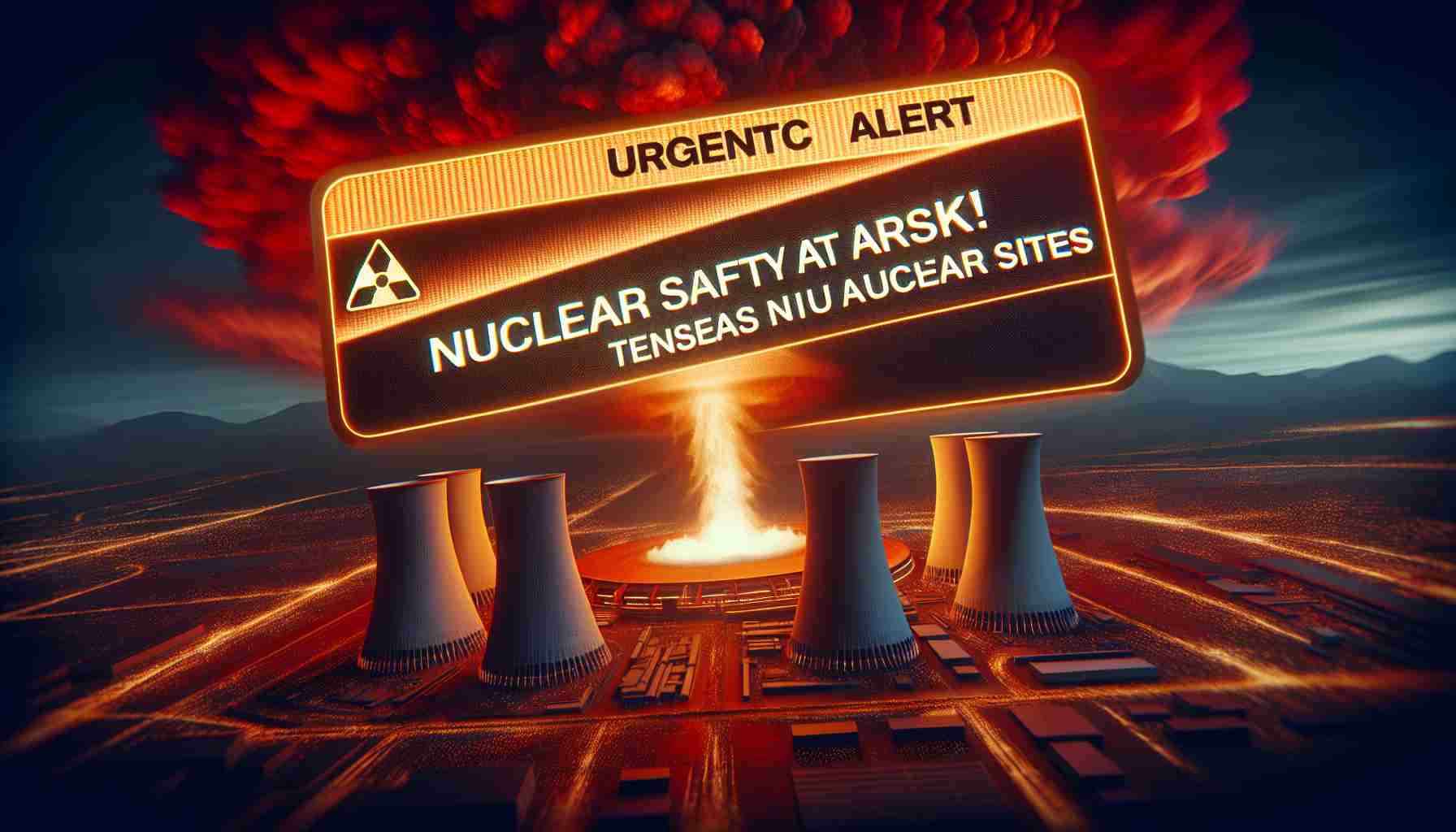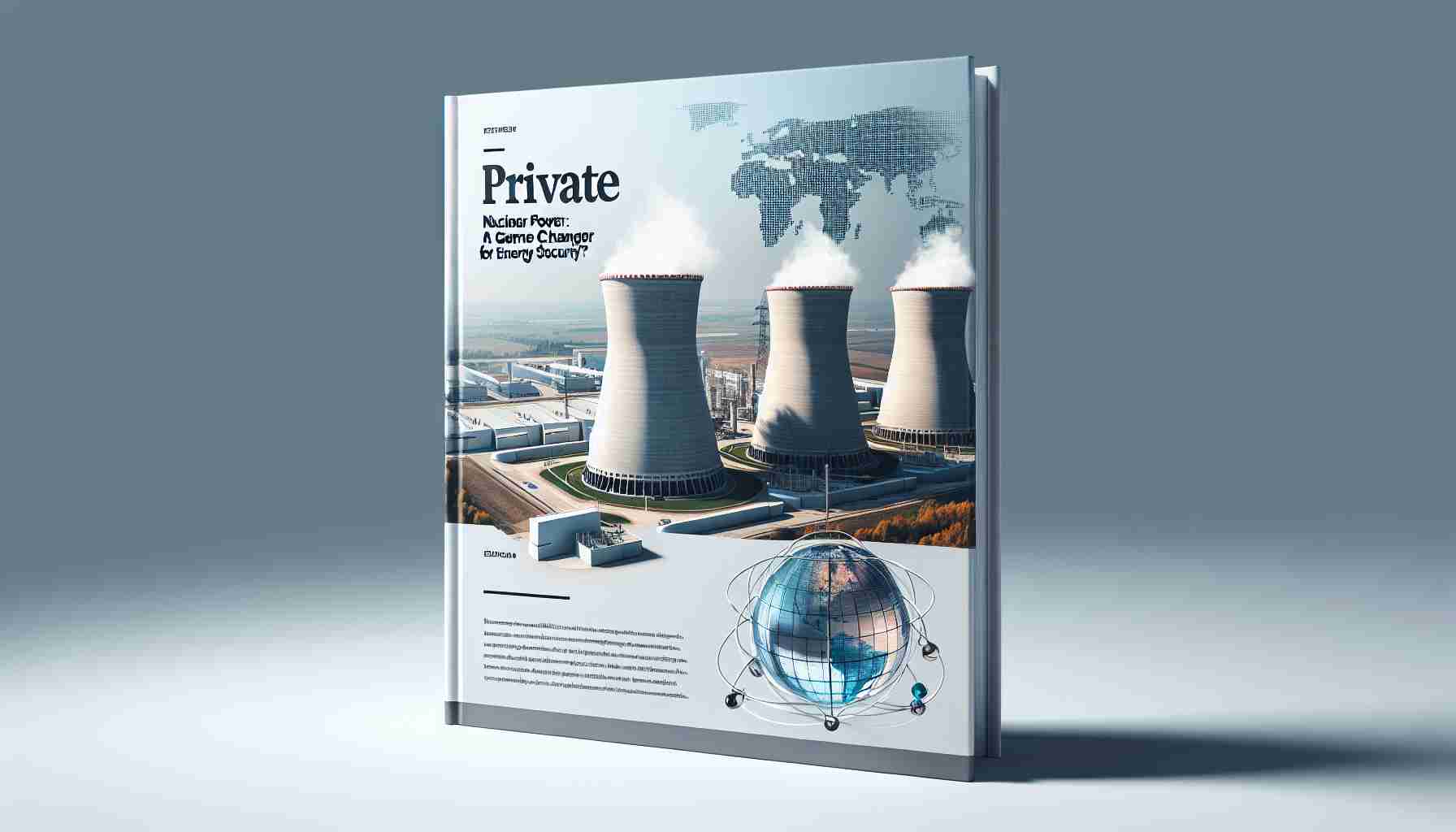Escalating Military Activity Threatens Ukraine’s Nuclear Power Plants
Ukraine’s Rivne nuclear power facility has been forced to momentarily lower its power generation amid alarming military movements in the vicinity of nuclear sites, as reported by the International Atomic Energy Agency (IAEA). IAEA officials monitoring various nuclear plants, including Rivne, Khmelnytskyy, South Ukraine, and the notorious Zaporizhzhia Nuclear Power Plant (ZNPP), have noted a surge in military activities recently.
On Wednesday, Rivne NPP reduced the output of one of its units as a safety precaution following a request from the grid operator due to an airstrike threat. Fortunately, that unit resumed normal operations shortly thereafter. Meanwhile, at the ZNPP, the situation remains unstable, with daily explosions reported in close proximity to the site, raising significant safety concerns.
Drones have been reported flying over the restricted zone at Chornobyl, contributing to fears regarding security breaches. In light of continuous air raid alerts, personnel at the Khmelnytskyy NPP were advised to seek shelter earlier this month. Similarly, sightings of drones near the South Ukraine facility alarmingly came within just five kilometers.
IAEA Director General Grossi emphasized that these threats compromise the safety of nuclear installations. The IAEA’s ongoing safety assessments continue to be crucial for monitoring the vulnerabilities posed by military operations in the region. This reality underscores the urgent need for vigilance and active international support to ensure the security of Ukraine’s nuclear infrastructure amidst ongoing conflict.
Global Concerns Over Nuclear Security Amidst Military Tensions
The rising military activity around Ukraine’s nuclear facilities carries serious implications for both regional stability and international security. The potential for catastrophic nuclear incidents is heightened, as military strikes or miscalculations near these sites could lead to significant radiation leaks, exacerbating an already dire humanitarian crisis. The world is painfully aware of the long-lasting repercussions of such events, as seen in Chernobyl and Fukushima, showcasing that nuclear accidents can affect not only the immediate area but also have far-reaching consequences across borders.
Moreover, this instability may disrupt global energy supplies. Ukraine has long been a key player in the European energy landscape, and disruptions in its nuclear output could amplify existing energy crises, particularly as Europe transitions towards greener energy sources. With oil and gas prices sensitive to geopolitical tensions, any nuclear incident could contribute to price volatility, affecting global markets and economies already strained by various external pressures.
In terms of environmental impact, the possible release of radioactive materials poses an immediate threat to surrounding ecosystems and could lead to long-term contamination similar to the aftermath of past nuclear disasters. As the conflict shows no signs of abating, trends indicate a need for enhanced international nuclear safety protocols and potentially the establishment of no-fly zones in such sensitive areas. As nations grapple with these challenges, the long-term significance of prioritizing nuclear safety amid military conflicts cannot be overstated.
Security Concerns Over Ukraine’s Nuclear Facilities Amid Military Escalation
Overview of the Situation
The ongoing military conflict in Ukraine has raised alarming concerns regarding the safety and security of the country’s nuclear power plants. Recent military activities near the Rivne nuclear power facility have prompted the International Atomic Energy Agency (IAEA) to monitor the situation closely, especially given the sensitivity and potential risks associated with nuclear operations during wartime.
Key Developments
Recent reports indicate that Rivne Nuclear Power Plant (NPP) was forced to temporarily reduce its power output as a precautionary measure due to escalating military threats in the area. This reduction came in response to concerns over possible airstrikes, as articulated by IAEA officials. Fortunately, operations resumed to normal levels shortly afterward, alleviating immediate fears.
Notably, the situation at the Zaporizhzhia Nuclear Power Plant (ZNPP) remains precarious, with daily explosions reported near the facility. This instability has raised pressing concerns about the safety of the plant and its operational integrity.
Increasing Military Activity
The rise in military activities has also been confirmed with reports of drones operating within restricted zones, particularly near the Chornobyl site and the South Ukraine Nuclear Power Plant, where drones have been spotted alarmingly close—within a mere five-kilometer radius. The presence of these drones, along with continuous air raid alerts, has led to heightened security measures across various nuclear facilities in Ukraine.
IAEA’s Role and Recommendations
IAEA Director General Rafael Grossi has publicly called attention to these threats, emphasizing that military operations near nuclear facilities must be monitored vigilantly to prevent potential disasters. The IAEA is conducting ongoing safety assessments to evaluate vulnerabilities and ensure protocols are adhered to for the protection of nuclear power installations.
Pros and Cons of the Current Nuclear Management Strategy
Pros:
– Increased Monitoring: The IAEA’s presence in Ukraine serves to enhance the safety of nuclear facilities through ongoing assessments.
– Prompt Response: The quick operational adjustments at Rivne NPP demonstrate adaptability and quick response to safety threats.
Cons:
– Operational Risks: Frequent military activities pose risks not only to personnel but also to nuclear operations which can lead to catastrophic outcomes.
– Infrastructure Stress: Continuous military pressures can strain the existing infrastructure, leading to possible failures in operations and safety protocols.
Insights into Regional Nuclear Security
The current situation highlights the critical need for an integrated approach to nuclear safety amidst armed conflicts. The international community must enhance diplomatic channels and support mechanisms to safeguard nuclear facilities—especially as military actions escalate.
Future Predictions
If current trends continue, the risks associated with military proximity to these nuclear sites may escalate. Enhanced international protective measures and diplomatic dialogues should be a focal point for global leaders to prevent a potential nuclear incident in conflict zones.
Conclusion
The threats to Ukraine’s nuclear power plants amid rising military activities present an urgent call for action. Ongoing surveillance and support from the IAEA and the global community are essential to mitigate risks and ensure the safety of not just Ukrainian citizens, but also neighboring regions.
For more updates and insights on nuclear safety in conflict zones, visit IAEA’s official website.
The source of the article is from the blog qhubo.com.ni



